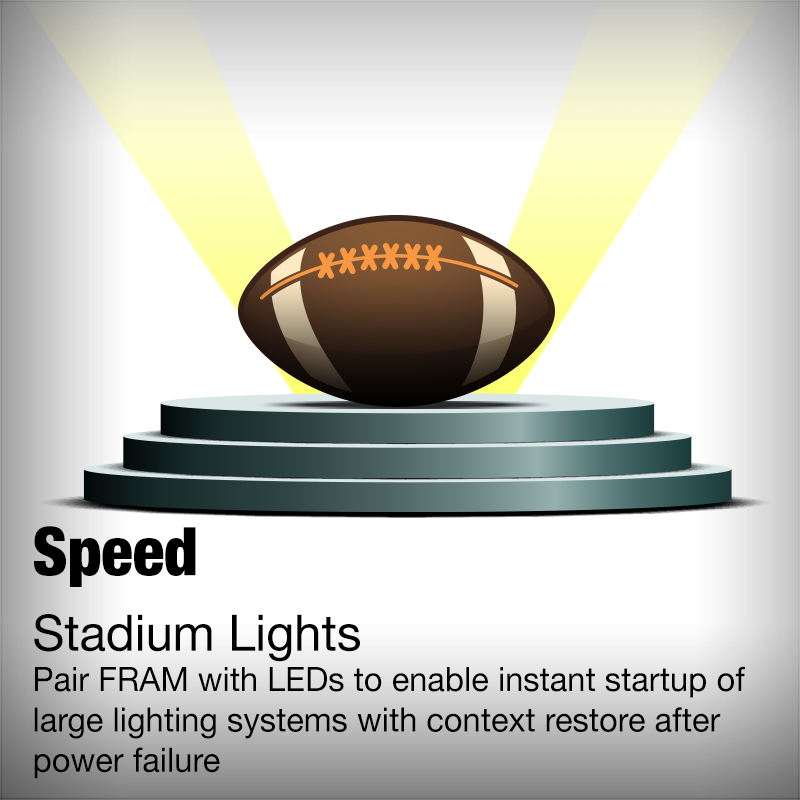SSZTCH6 july 2015 CC1101 , MSP430FR5969
In 2013, the largest sporting event in the world experienced a 34-minute play delay due to a power outage. The delay time was caused by the use of older lighting technologies that required a cool-down period before being turned back on and a warm-up period to reach full output levels. This long delay could have been shortened with the use of low-power LED-based lighting solutions, like that from Ephesus Lighting Inc. These solutions offer wireless real-time control in the form of on/off, dimming, sequencing and other effects.
This type of implementation is relatively new to the market and enables a number of advantages in terms of energy efficiency and functionality over more traditional systems, but these systems do have some additional requirements to consider. The perception of hundreds of cameras flashing all over a stadium could be quite useful in highlighting an event, but this type of effect would require low latency for hundreds of wirelessly controlled fixtures to enable instant (to the human eye at least) on and off capabilities. Additionally, these systems can consume significantly less power than other solutions when on, but ultra-low power consumption when the lights are off can help contribute to meeting energy requirements. Security is another important requirement as well since these lights should only be controlled by a stadium’s operations team.

In the Ephesus system, Anaren Air modules (based on TI’s Sub-1 GHz CC1101 RF transceiver) are paired with an ultra-low-power MSP430FRxx FRAM microcontroller to enable low-power wireless lighting control. Mark Bowyer, Director of Wireless Business Development at Anaren, explained the use of an MSP in the system:
“It was the FRAM in the device that was a deciding factor in the selection. As power interruptions and inconsistent power cleanliness is a constant battle, we needed to be able to retain fundamental command and control code in more of an ‘e-ink’ style repository. This allows us to retain system reboot and scene command sets in a ROM-style storage medium with flash accessibility and speed characteristics while maintaining our demand for the lowest power consumption while in dormant mode.”
In a system like the one described above, there are several benefits enabled by FRAM. Combining the non-volatility, write speeds, and low power of our FRAM MCUs with the integration of AES modules and memory protection units are what make devices like the MSP430FR5969 MCU stand apart from competitive solutions.
Are you interested in creating a wireless system like this one?
Consider getting started with the new MSP-EXP430FR6989 LaunchPad and the 430BOOST-CC110L RF BoosterPack. Then why not try adding state restoration after power fail with the new Compute Through Power Loss (CTPL) FRAM utility.